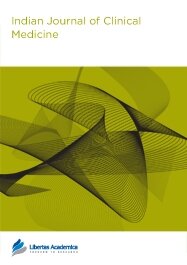

Publication Date: 20 Mar 2011
Type: Review
Journal: Indian Journal of Clinical Medicine
Citation: Indian Journal of Clinical Medicine 2011:2 1-17
doi: 10.4137/IJCM.S5475

Hypertension is an important medical and public health issue all over the world. It is one of the most prevalent conditions seen today by clinicians in both developed and developing countries. Depending upon progression of systolic and diastolic blood pressure it is classified into stage 1, 2 and 3 hypertension. Life style modifications may be helpful in initial stage but pharmacological treatment is necessary when it become difficult to control it. In routine practice, pharmacological treatment is being selected from diuretics, β-blockers, calcium channel blockers and renin angiotensin system inhibitors either alone or in combination for both initial and maintenance therapy. Choice of drug depends upon favourable effects in specific clinical setting. Thiazide type diuretics are being preferred for most patients with uncomplicated hypertension whereas β-blockers show strong benefits in patients with a variety of cardiovascular complications. ACE-Inhibitors and ARBs are superior to other class in patients with multiple risk factors like obesity, insulin resistance or diabetes. CCBs compared with other class of hypertensive drugs demonstrate similar blood pressure lowering effects and similar reductions in cardiovascular morbidity and mortality but higher incidence of heart failure and fatal myocardial infarction in some patients. Despite the continued decrease in mortality and morbidity rate by these antihypertensive drugs, some documented increasing prevalence of cardiac failure and end stage renal disease remains to be explained.
PDF (589.03 KB PDF FORMAT)
RIS citation (ENDNOTE, REFERENCE MANAGER, PROCITE, REFWORKS)
BibTex citation (BIBDESK, LATEX)

My personal observation about LA is that our paper was critically peer reviewed for a constructive, speedy and high quality manner. Our research paper from a different perspective of built environment in manifestation of diabetes was received by peer reviewers very positively and constructively. We are highly satisfied.
Facebook Google+ Twitter
Pinterest Tumblr YouTube